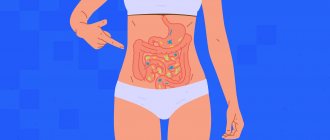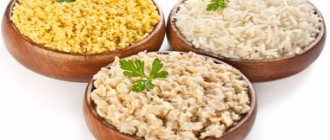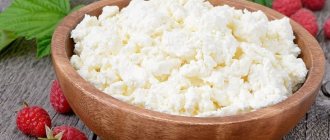The hormone oxytocin: stress, digestion, germs and health
Part 1: The Hormone Oxytocin Links Stress to Digestive Symptoms
Part 2: Germs, Oxytocin, and Healthy Longevity
Hypothalamic-vagal oxytocinergic neurocirculation modulates gastric emptying and motility after stress.
A new study by researchers from the Department of Neural and Behavioral Sciences, Penn State Hershey College of Medicine, found that oxytocin, the so-called. The "love hormone" plays an important role in stress-related digestive symptoms such as nausea, bloating and diarrhea. The study was published in The Journal of Physiology
.
Stress disrupts the functions of the gastrointestinal tract and causes a delay in gastric emptying ( how quickly food leaves the stomach and gastrointestinal tract in general
). This delay in gastric emptying causes bloating, discomfort and nausea, and also accelerates colonic transit, causing diarrhea.
Oxytocin, an anti-stress hormone, is released from the hypothalamus of the brain, which neutralizes the effects of stress. It has long been thought that oxytocin's effects occur through its release into the blood, with little effect on the nerves in the brain that regulate gastrointestinal functions.
This study used new ways to manipulate the neurons and nerves (neural networks) affected by oxytocin released by the hypothalamus and measured its effect on the gastric emptying response to stress. They showed that, contrary to previous assumptions, these oxytocin chains play an important role in the stomach's response to stress.
Activation of these oxytocin circuits reversed the delay in gastric emptying that typically occurs in response to stress by increasing gastric muscle contractions (motility), while inhibition of these neural circuits prevented adaptation to stress.
The new study, conducted by the Pennsylvania State University College of Medicine and sponsored by a grant from the National Institutes of Health, used advanced tools to selectively manipulate the circuits that receive hypothalamic oxytocin input, while simultaneously measuring gastric emptying and motility in response to stress.
The authors used a rat model of various types of stress
– 1. acute stress, 2. appropriate adaptation to stress and 3. inappropriate adaptation to stress.
The authors infected the neurons that control oxytocin nerves and neural networks with new viruses
, which allowed them
to activate
or
inhibit
and measure muscle activity in the stomach, as well as gastric emptying (
the time when food leaves the stomach
).
Researchers have shown that these oxytocin neural circuits play an important role in the stomach's response to stress. Indeed, their activation reversed the delayed gastric emptying observed after an acute or chronic stress response, thereby increasing both gastric tone and motility. Conversely, suppression of these neural networks interfered with adaptation to stress, delaying gastric emptying and reducing gastric tone.
These findings indicate that oxytocin directly influences neural pathways involved in the stress response and plays an important role in the stomach's response to stressors.
The ability to respond appropriately to stress is important for normal physiological functions. An inappropriate response to stress or failure to adapt to stress causes and worsens the symptoms of many gastrointestinal disorders, including delayed gastric emptying and accelerated colonic transit.
Previous research has shown that nerves and neural networks that regulate gastric muscle function and gastric emptying respond to stress by changing their activity and responses.
To identify targets for more effectively treating impaired gastric stress responses, it is important to first understand how stress typically affects gastric function. The study provided new information about the role oxytocin plays in controlling these nerves and circuits during stress and may identify new targets for drug development.
Commenting on the study, study author R Alberto Travagli said: “Women are more vulnerable to stress and stress-related pathologies such as anxiety and depression, and report a higher prevalence of gastrointestinal disorders. Our previous studies have shown that the vagus nerve circuits are wired differently in men. We are currently completing a series of studies examining the role and mechanisms by which oxytocin modulates gastric function in stressed women. This will help develop targeted treatments to provide relief to women with gastrointestinal disorders.
Source: This article has been republished from materials provided by the
Physiological Society
.
Journal article & R. Alberto Travagli. Hypothalamic-vagal oxytocinergic neurocircuitry modulates gastric emptying and motility following stress. The Journal of Physiology
, 30 August 2022.
From problems to the refrigerator
According to statistics collected by researchers, up to half of the world's population
is trying to deal with stress with the help of high-calorie foods.
Eating food is as enjoyable for a person as smoking is for a smoker or drinking is for an alcoholic. As soon as a person begins to eat, the release of “hormones of joy” - endorphins. Moreover, when consuming different foods, the amount of hormones produced is different. There is a food that allows you to get the greatest dose of endorphins. Nana Vachikovna says that against a background of stress, a person tries to stretch out the time
of receiving “hormonal joy” for as long as possible.
In especially difficult cases, a person can eat absolutely everything he finds in the refrigerator. But there is another way out of stress. Some people do it “out of necessity”, that is, they practically refuse
food. And not for a few hours, but for days and even a week. In the end, it all ends with serious weight loss. Our expert explains that this is one of the main symptoms of major depressive disorder.
Microbes, the hormone oxytocin and healthy longevity
Beneficial microbes stimulate hypothalamic hormones and immune tolerance for healthy longevity
Susan
E Erdman
Microbes, Oxytocin, and Healthful Longevity
Journal of Probiotics & Health -
2014, 2:117
annotation
The microbiome has been shown to play an important role in human health. Recent studies in mice show that gut microbes stimulate the host neuropeptide oxytocin
and immune physiology in a mind-body paradigm with various effects, improving systemic wound healing capacity. Oxytocin is best known for its role in reproduction and immunity, but more recently it has been implicated in obesity, human bonding and trust. Microbial reprogramming of host oxytocin may provide far-reaching physical, mental and social health benefits for healthy longevity.
Introduction
The potential of the microbiome to optimize mammalian health is only now being recognized [1–4]. In a series of recent manuscripts, Poutahidis et al. It has been shown that model intestinal microorganisms can stimulate host hormones and immunity to improve wound healing capacity [5], inhibit obesity [6], and support reproductive functions [7]. Although the microbial pathway of stimulating oxytocin production is unprecedented, alliances between gut microbes and CD4+ regulatory T cells have been shown to influence various inflammatory processes, including body fat deposition [8]. Indeed, consumption of purified probiotic microbes reduces the risk of obesity in humans [9]. Substantial indirect support also exists from scientific and epidemiological studies linking microbes to systemic health [1–4, 10–22]. Despite the enormous potential for improving quality of life, exogenous administration of pluripotent hormones such as oxytocin has proven difficult. Beneficial microbes can overcome this and, as a result, have far-reaching potential benefits for a person's physical, mental and social health.
Probiotic Microbes Stimulate Positive Immune Tolerance
It is widely recognized that the alliance between gut microbes and CD4+ regulatory T (Treg) lymphocytes dramatically influences whole-body health outcomes [8,11,23–26]. Immune tolerance prevents an overreaction to self or environmental factors that would otherwise cause an adverse inflammatory response. Tolerance is mediated by a subset of CD4+ lymphocytes, namely Treg cells, which serve to attenuate detrimental inflammatory responses. Thus, the increased capacity for immune tolerance helps the body recover from injury, at least in part by rapidly eliminating damaging chronic inflammation in the form of neutrophils and mast cells [6,27]. Recently, it was found that the addition of the oral purified probiotic model organism Lactobacillus
reuteri
(LR) resulted in complete wound reepithelialization in half the time required for untreated controls, in an oxytocin-dependent manner, leaving only minimal scar tissue afterwards [5]. Similarly, LR feeding induced immune tolerance and reduced the burden of breast cancer in mouse models [28]. The parallels between wound healing and cancer are logical, since “cancer is a wound that will not heal” [29]. The fact that oxytocin enhances the expression of interferon gamma (IFN-γ) in a tightly controlled immune system may help explain its beneficial role in cancer protection [5,30–32].
Substantial mechanistic insight was gained from the observation that cellular transfer of highly purified immune tolerance cells, CD4+CD25+Foxp3+Treg cells, was sufficient to recapitulate microbe-induced enhancement of wound healing [5]. Transplanted Treg cells have been found to significantly reduce age-related weight gain [6] and cancer burden [28]. In mouse models, the effectiveness of microbe-induced Tregs depended on the presence of the neuropeptide hormone oxytocin [5]. This suggests that edible microbes could be used prophylactically or therapeutically to induce dramatic hormonal and immune changes in animal hosts. It is tempting to extrapolate these data to mice to capture the broader microbial ecology. However, many recent discoveries of microbe-host interactions have yet to be proven in humans.
Microbes upregulate the neuropeptide hormone oxytocin with improved wound healing ability
Oxytocin is a neuropeptide hormone that plays a fundamental role in social bonding and reproduction in mammals. In addition to key physiological roles in childbirth and nursing, it is now widely recognized in metabolism, the immune system, and central nervous system (CNS) functions such as social memory and attachment, sexual behavior, aggression, human bonding and trust, learning, creativity, anxiety, eating behavior and pain cognition in both men and women [17–22,30,31,33]. Recently, oxytocin was found to be integral to microbe-induced immune benefits in wound healing via the vagus nerve-mediated pathway [5]. The ability to effectively heal wounds ranges from recovery from minor injuries to diabetes and some types of cancer [2,3,10–12], which together contribute to healthier aging.
The recent discovery that gut microbes can stimulate oxytocin to improve wound healing and healthy longevity [5] is based on a solid foundation of science. Oxytocin has recently been shown to reduce debilitating conditions and sarcopenia in aging animals, resulting in stronger skeletal muscle [34]. Oxytocin has also recently gained traction as a key molecule not only in overall immune system balance and health, but also in feelings of social well-being, love, spirituality and satisfying life experiences. Such social connections are known to improve wound healing processes in humans [35].
Finally, oxytocin also increases generosity and empathy [17–22], promoting not only longer life but also the experience of a more meaningful life.
Wound healing, oxytocin and the mind-body connection
Human civilization has long postulated psychological well-being and the mind-body connection as the foundation of healthy aging. Freedom from disease throughout life is based on the host's ability to respond effectively to injury, infectious agents, and social stress, with the homeostatic balance of the entire organism resulting in minimal pathology [36–39]. The discovery that beneficial bacteria improve recovery from tissue damage integrates oxytocin and immune tolerance into the mind-body connection (Figure 1) [5]. This consists of the effects by which oxytocin enhances immune tolerance, preventing overreactivity to self or environmental factors that would otherwise cause an adverse inflammatory response. Tolerance is conveyed by a subset of CD4+ lymphocytes, namely T regulatory (Treg) cells, which serve to suppress harmful inflammatory responses. The increased ability of immune tolerance in the presence of oxytocin in mice promotes the healing of their skin wounds, at least in part through rapid clearance of neutrophils and chronic inflammation [5, 27]. Although this oversimplifies a complex process, oxytocin has been shown to activate IFN-γ to induce sustained but highly regulated integral immunity for good health [5,30–32]. The sum of this provides re-epithelialization (wound healing) in half the time required for untreated controls, leaving only minimal scar tissue [6].
This is what mammals are made of: commensal microbes, immune tolerance and oxytocin.
It is well known that the connection between a microbe and a hormone begins before birth. In healthy mammals, microbes stimulate immune tolerance using the sex steroid hormones, oxytocin and interleukin (IL)-10, to support long-term placental pregnancy [40]. At birth, oxytocin simultaneously activates the expression of IFN-γ and CD25, establishing a mechanism of immune recognition of self versus non-self [30–32]. In later life, this same oxytocin metabolism maintains immune and integumentary homeostasis by biasing the immune system toward IL-10 and IFN-γ, and therefore minimizing the deleterious systemic effects of IL-6 and IL-17 that accelerate morbidity and premature death. death [6]. Oxytocin also regulates gamma-aminobutyric acid (GABA) neurotransmitter signaling in the central nervous system [41], providing favorable mood rewards [16] for social and overall satisfaction. Emerging evidence links oxytocin to obesity, fat metabolism [42,43] [6], the musculoskeletal system [34] and the immune system [5,30,31,33], supporting its role as a global regulatory hormone.
Figure 1. Gut microbes stimulate hormonal and immune signaling for healthy longevity. Healthy aging is generally associated with the ability of the host to respond to tissue damage with effective homeostatic balance and minimal pathology. Effective injury recovery and lifelong good health are regulated by hypothalamic hormones (eg, oxytocin) integrated with peripheral endocrine glands (eg, adrenal cortex, thyroid, and gonads) in conjunction with the systemic immune system. Recently, beneficial gut microbes were found to stimulate oxytocin, which regulates the expression of interferon (IFN)-γ and CD25 for immune tolerance in a transplantable manner. Together, this prevents overreactivity to self or environmental factors that otherwise lead to premature death.
These diverse phenotypes caused by probiotic microbes have perinatal effects that can extend across generations. Oxytocin, for example, is inversely associated with postpartum depression and maternal neglect in women [44]. Although oxytocin promotes cooperation within kin groups, it promotes aggression towards competitors [45]. These interrelated roles of oxytocin may influence the process of natural selection to favor the complex social organizations necessary for mutual evolutionary success. Through the action of microbe-induced hormones such as oxytocin, gut bacteria can influence our desires and identity as people.
Using microbes for healthy longevity.
In adulthood, these microorganisms stimulate immune tolerance and the hypothalamic-pituitary axis to improve host fitness and reduce the disorders of aging. Features associated with superior fitness and youth include mucosal hyperactivity and follicular anagenesis [46]. All of this makes good sense from an evolutionary perspective, as commensal microbes have coevolved with mammals, exploiting host immunity and endocrinology for mutual benefit [46,47]. During periods of fertility, the immune and hormonal effects of probiotic organisms dominate interactions with the environment and promote host survival and reproductive success [46]. Increased immune tolerance to probiotics allows prolongation of placental pregnancy [40], while hyperacid mucus suppresses pathogens that otherwise interfere with gastrointestinal health, fertilization and pregnancy. Disruption of this natural symbiotic cycle through obsessive social hygiene practices results in insufficient levels of IL-10 in the mucosa [24,25], promoting immune dysregulation with an increased risk of premature death. Under favorable conditions, these probiotic bacteria are then passed from mother to naïve offspring during vaginal birth and lactation, conferring evolutionary success on both the symbiotic bacteria and their mammalian hosts.
In conclusion, oral microbes may reduce the impairments of aging and impart healthy vitality typical of much younger adults [5,7,46], providing the psychological and physiological foundations of healthy longevity. In preclinical models, microbes have been shown to reduce age-related weight gain [6] and the burden of cancer [28], which contributes to premature aging. Measurable benefits in wound healing capacity are directly reflected in almost every aspect of conventional health and medicine [42,48], while integrating social support networks with improved trauma management for healthy and meaningful living [49]. In practical terms, this connection between the microbe, endocrine and immune systems can reduce hospitalizations, improve healing, reduce the risk of some cancers and promote well-being and active participation throughout life. It is not known for sure whether the results obtained in animal models will apply directly to humans. However, peoples around the world have grown and consumed similar food organisms in fermented beverages and active yogurt drinks for thousands of years, supporting a low-risk population-based approach to long, healthy, and fulfilling lives.
Literature
- Gordon J (2012) Honor thy gut symbionts redux. Science 336: 1251-1253.
- Clemente JC, Ursell LK, Parfrey LW, Knight R (2012) The impact of the gut microbiota on human health: an integrative view. Cell 148:1258–1270.
- Shanahan F (2012) The gut microbiota—a clinical perspective on lessons learned. Nat Rev Gastroenterol Hepatol 9:609–614.
- Young VB (2012) The intestinal microbiota in health and disease. Curr Opin Gastroenterol 28:63–69.
- Poutahidis T, Kearney SM, Levkovich T, Qi P, Varian BJ, et al. (2013) Microbial symbionts accelerate wound healing via the neuropeptide hormone oxytocin. PLoS One 8: e78898.
- Poutahidis T, Kleinewietfeld M, Smillie C, Levkovich T, Perrotta A, et al. (2013) Microbial reprogramming inhibits Western diet-associated obesity. PLoS One 8: e68596.
- Poutahidis T, Springer A, Levkovich T, Qi P, Varian BJ, et al. (2014) Probiotic microbes sustain youthful serum testosterone levels and testicular size in aging mice. PLoS One 9: e84877.
- Belkaid Y, Hand TW (2014) Role of the microbiota in immunity and inflammation. Cell 157:121–141.
- Sanchez M, Darimont C, Drapeau V, Emady-Azar S, Lepage M, et al. (2014) Effect of Lactobacillus rhamnosus CGMCC1.3724 supplementation on weight loss and maintenance in obese men and women. Br J Nutr 111:1507–1519.
- Rao VP, Poutahidis T, Ge Z, Nambiar PR, Boussahmain C, et al. (2006) Innate immune inflammatory response against enteric bacteria Helicobacter hepaticus induces mammary adenocarcinoma in mice. Cancer Res 66:7395–7400.
- Rao VP, Poutahidis T, Fox JG, Erdman SE (2007) Breast cancer: should gastrointestinal bacteria be on our radar screen? Cancer Res 67:847–850.
- Scanlan PD, Shanahan F, Clune Y, Collins JK, O'Sullivan GC, et al. (2008) Culture-independent analysis of the gut microbiota in colorectal cancer and polyposis. Environ Microbiol 10:789–798.
- Cryan JF, Dinan TG (2012) Mind-altering microorganisms: the impact of the gut microbiota on brain and behavior. Nat Rev Neurosci 13:701–712.
- Foster JA, McVey Neufeld KA (2013) Gut-brain axis: how the microbiome influences anxiety and depression. Trends Neurosci 36: 305–312.
- Davari S, Talaei SA, Alaei H, Salami M (2013) Probiotics treatment improves diabetes-induced impairment of synaptic activity and cognitive function: behavioral and electrophysiological proofs for microbiome-gutbrain axis. Neuroscience 240: 287–296.
- Bravo JA, Forsythe P, Chew MV, Escaravage E, Savignac HM, et al. (2011) Ingestion of Lactobacillus strain regulates emotional behavior and central GABA receptor expression in a mouse via the vagus nerve. Proc Natl Acad Sci USA 108:16050–16055.
- Gimpl G, Fahrenholz F (2001) The oxytocin receptor system: structure, function, and regulation. Physiol Rev 81:629–683.
- Wismer Fries AB, Ziegler TE, Kurian JR, Jacoris S, Pollak SD (2005) Early experience in humans is associated with changes in neuropeptides critical for regulating social behavior. Proc Natl Acad Sci USA 102:17237–17240.
- Lim MM, Young LJ (2006) Neuropeptidergic regulation of affiliative behavior and social bonding in animals. Horm Behav 50:506–517.
- Donaldson ZR, Young LJ (2008) Oxytocin, vasopressin, and the neurogenetics of sociality. Science 322:900-904.
- Lee HJ, Macbeth AH, Pagani JH, Young WS 3rd (2009) Oxytocin: the great facilitator of life. Prog Neurobiol 88:127–151.
- Meyer-Lindenberg A, Domes G, Kirsch P, Heinrichs M (2011) Oxytocin and vasopressin in the human brain: social neuropeptides for translational medicine. Nat Rev Neurosci 12:524–538.
- Lee YK, Mukasa R, Hatton RD, Weaver CT (2009) Developmental plasticity of Th17 and Treg cells. Curr Opin Immunol 21:274–280.
- Rook GA (2009) Review series on helminths, immune modulation and the hygiene hypothesis: the broader implications of the hygiene hypothesis. Immunology 126: 3-11.
- Rook GA, Dalgleish A (2011) Infection, immunoregulation, and cancer. Immunol Rev 240:141–159.
- Erdman SE, Rao VP, Olipitz W, Taylor CL, Jackson EA, et al. (2010) Unifying roles for regulatory T cells and inflammation in cancer. Int J Cancer 126:1651–1665.
- Costa RA, Ruiz-de-Souza V, Azevedo GM Jr, Gava E, Kitten GT, et al. (2011) Indirect effects of oral tolerance improve wound healing in skin. Wound Repair Regen 19:487–497.
- Lakritz JR, Poutahidis T, Levkovich T, Varian BJ, Ibrahim YM, et al. (2014) Beneficial bacteria stimulate host immune cells to counteract dietary and genetic predisposition to mammary cancer in mice. Int J Cancer 135:529–540.
- Dvorak HF (1986) Tumors: wounds that do not heal. Similarities between tumor stroma generation and wound healing. N Engl J Med 315:1650–1659.
- Macciò A, Madeddu C, Chessa P, Panzone F, Lissoni P, et al. (2010) Oxytocin both increases the proliferative response of peripheral blood lymphomonocytes to phytohemagglutinin and reverses immunosuppressive estrogen activity. In Vivo 24: 157–163.
- Johnson HM, Torres BA (1985) Regulation of lymphokine production by arginine vasopressin and oxytocin: modulation of lymphocyte functions by neurohypophyseal hormones. J Immunol 135(2 Suppl): 773s–775s.
- Ndiaye K, Poole DH, Pate JL (2008) Expression and regulation of functional oxytocin receptors in bovine T lymphocytes. Biol Reprod 78:786–793.
- Barnard A, Layton D, Hince M, Sakkal S, Bernard C, et al. (2008) Impact of the neuroendocrine system on thymus and bone marrow function. Neuroimmunomodulation 15: 7–18.
- Elabd C, Cousin W, Upadhyayula P, Chen RY, Chooljian MS, et al. (2014) Oxytocin is an age-specific circulating hormone that is necessary for muscle maintenance and regeneration. Nat Commun 5:4082.
- Gouin JP, Kiecolt-Glaser JK (2012) The impact of psychological stress on wound healing: methods and mechanisms. Crit Care Nurs Clin North Am 24:201–213.
- Fabris N (1991) Neuroendocrine-immune interactions: a theoretical approach to aging. Arch Gerontol Geriatr 12:219–230.
- De la Fuente M (2002) Effects of antioxidants on immune system aging. Eur J Clin Nutr 56 Suppl 3:S5-8.
- Kowald A, Kirkwood TB (1996) A network theory of aging: the interactions of defective mitochondria, aberrant proteins, free radicals and scavengers in the aging process. Mutat Res 316:209–236.
- Tosato M, Zamboni V, Ferrini A, Cesari M (2007) The aging process and potential interventions to extend life expectancy. Clin Interv Aging 2:401–412.
- Josefowicz SZ, Lu LF, Rudensky AY (2012) Regulatory T cells: mechanisms of differentiation and function. Annu Rev Immunol 30:531–564.
- Tyzio R, Cossart R, Khalilov I, Minlebaev M, Hübner CA, et al. (2006) Maternal oxytocin triggers a transient inhibitory switch in GABA signaling in the fetal brain during delivery. Science 314: 1788-1792.
- Camerino C (2009) Low sympathetic tone and obese phenotype in oxytocin-deficient mice. Obesity (Silver Spring) 17:980–984.
- Ho JM, Blevins JE (2013) Coming full circle: contributions of central and peripheral oxytocin actions to energy balance. Endocrinology 154:589–596.
- Skrundz M, Bolten M, Nast I, Hellhammer DH, Meinlschmidt G (2011) Plasma oxytocin concentration during pregnancy is associated with the development of postpartum depression. Neuropsychopharmacology 36:1886–1893.
- De Dreu CK, Greer LL, Handgraaf MJ, Shalvi S, Van Kleef GA, et al. (2010) The neuropeptide oxytocin regulates parochial altruism in intergroup conflict among humans. Science 328: 1408–1411.
- Levkovich T, Poutahidis T, Smillie C, Varian BJ, Ibrahim YM, et al. (2013) Probiotic bacteria induce a 'glow of health'. PLoS One 8: e53867.
- Erdman SE, Poutahidis T2 (2014) Probiotic 'glow of health': it's more than skin deep. Benef Microbes 5: 109–119.
- Andari E, Duhamel JR, Zalla T, Herbrecht E, Leboyer M, et al. (2010) Promoting social behavior with oxytocin in high-functioning autism spectrum disorders. Proc Natl Acad Sci USA 107: 4389–4394.
- Detillion CE, Craft TK, Glasper ER, Prendergast BJ, DeVries AC (2004) Social facilitation of wound healing. Psychoneuroendocrinology 29:1004–1011.











